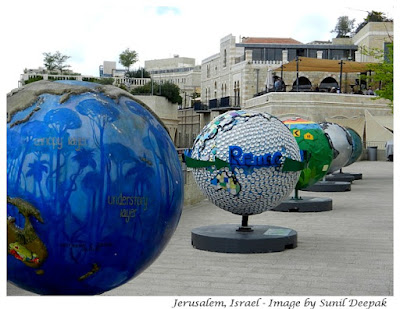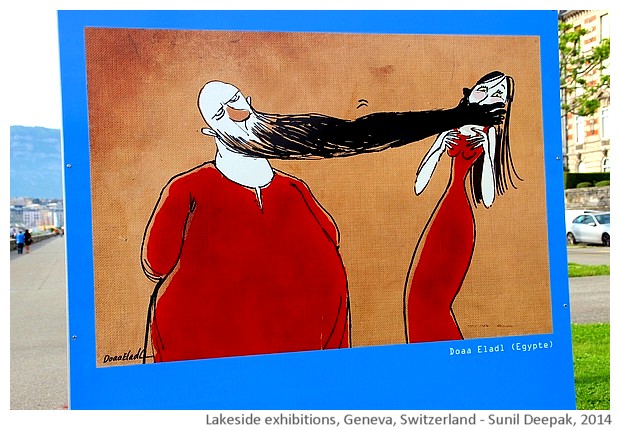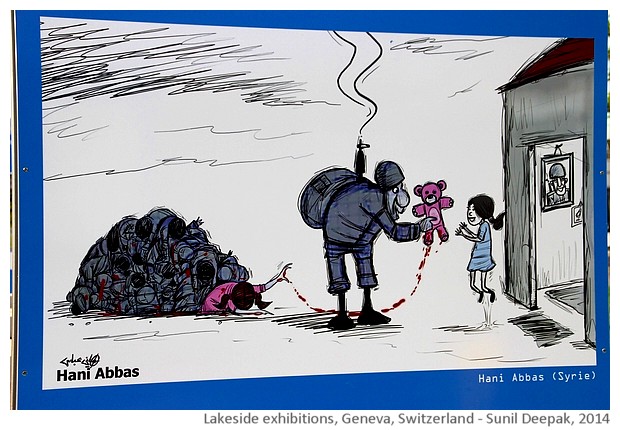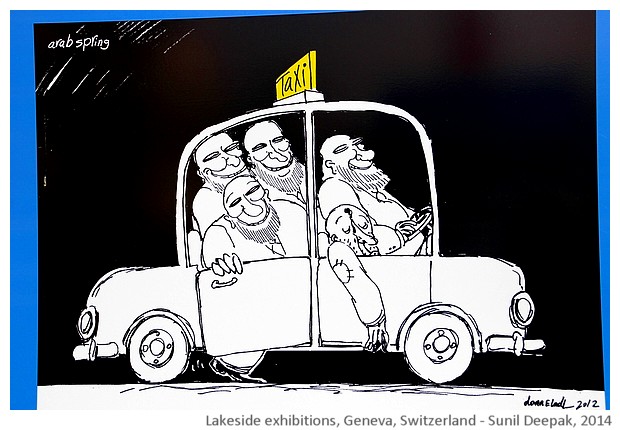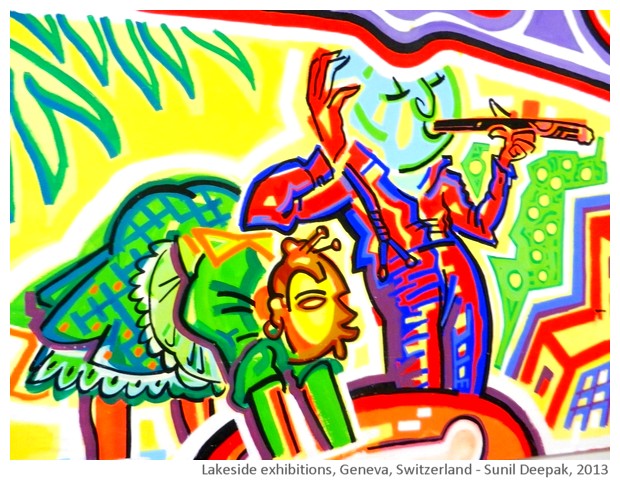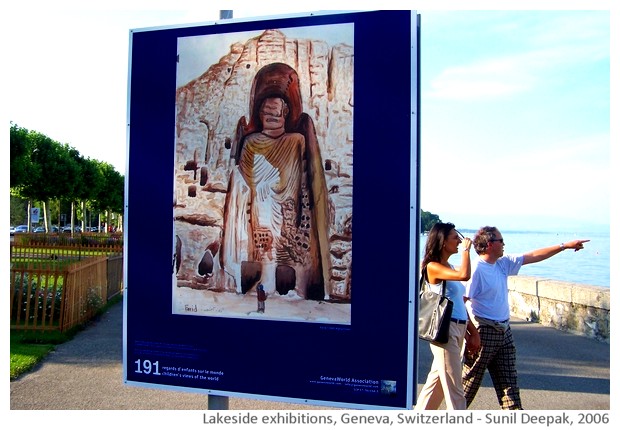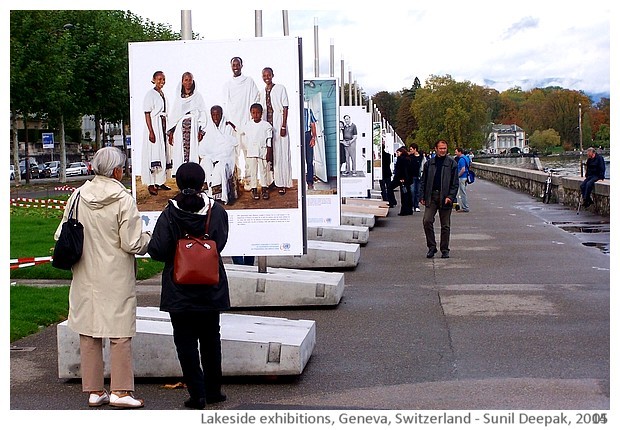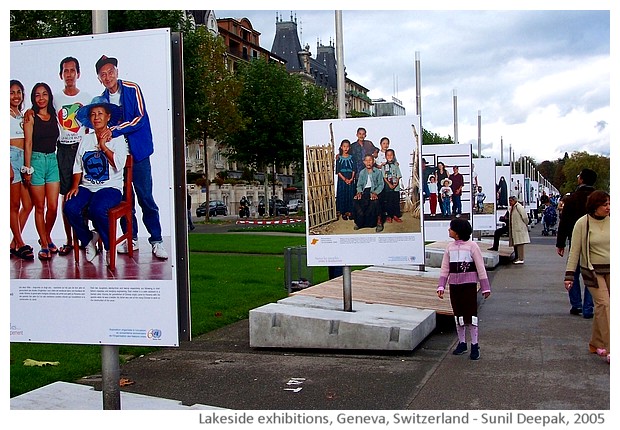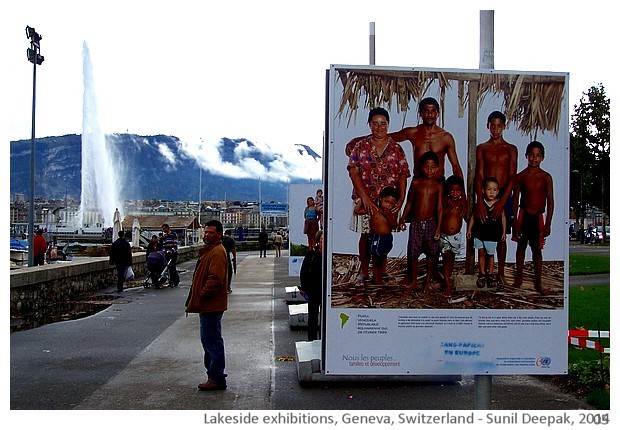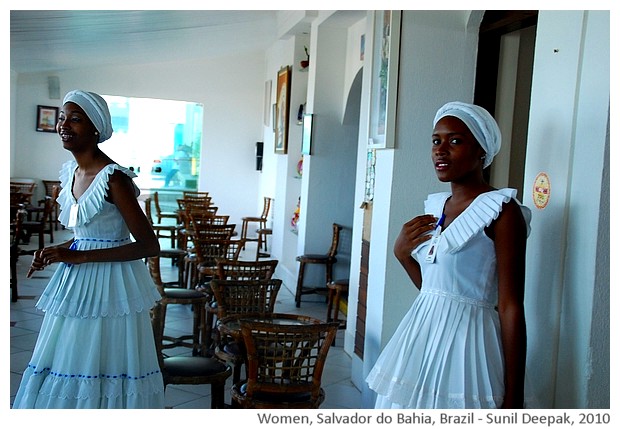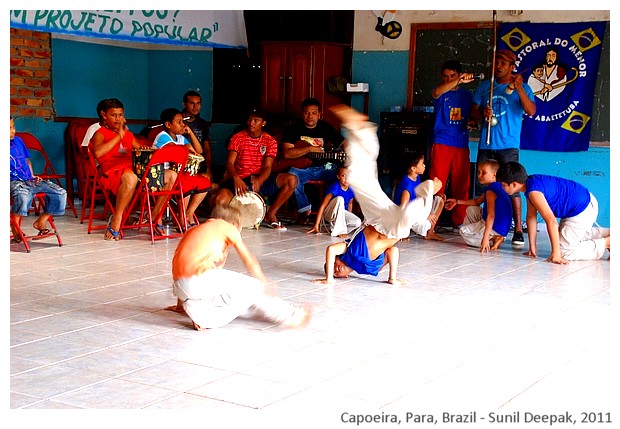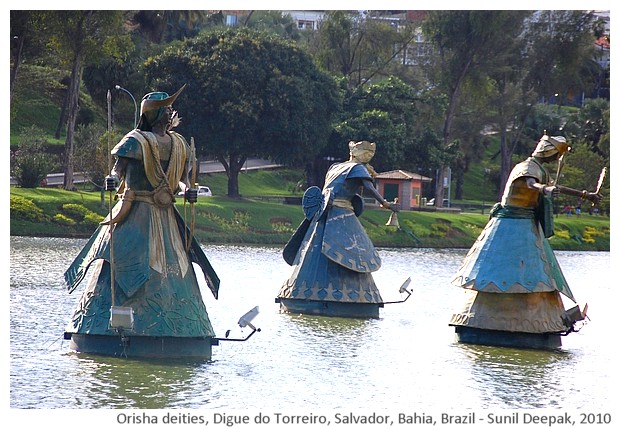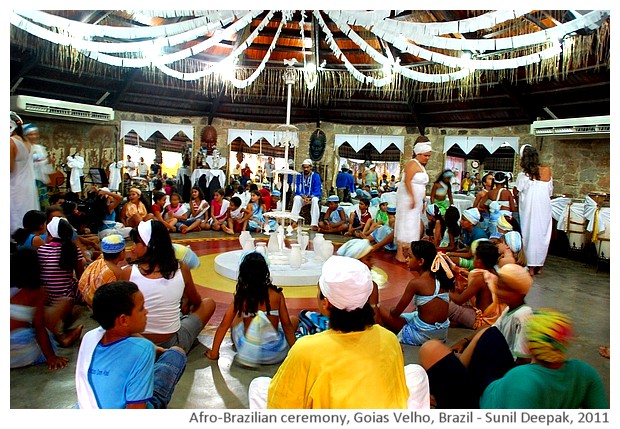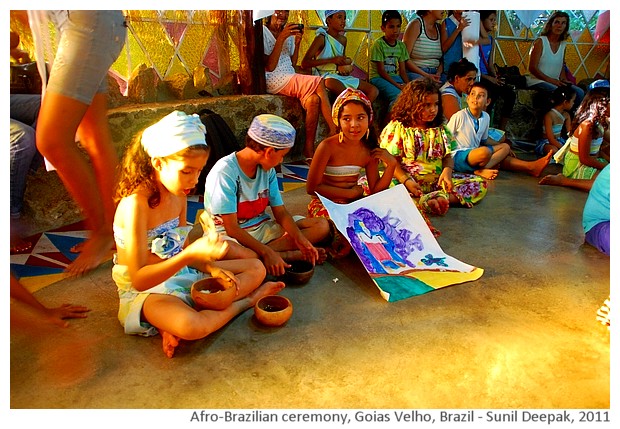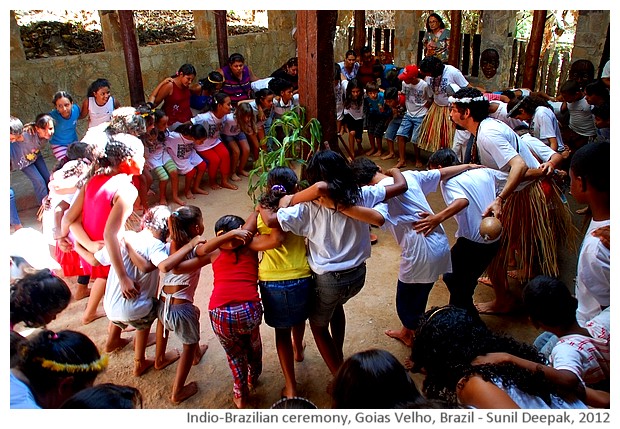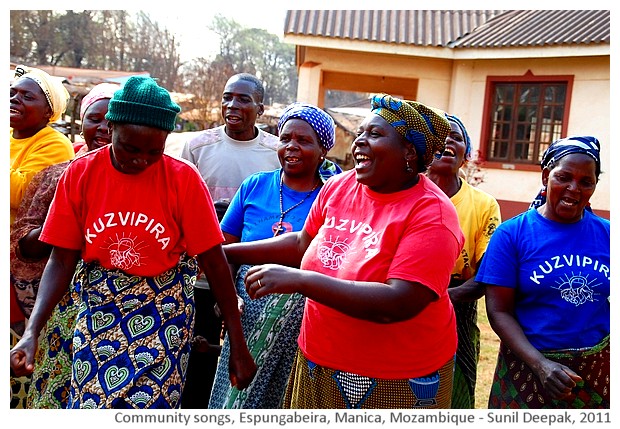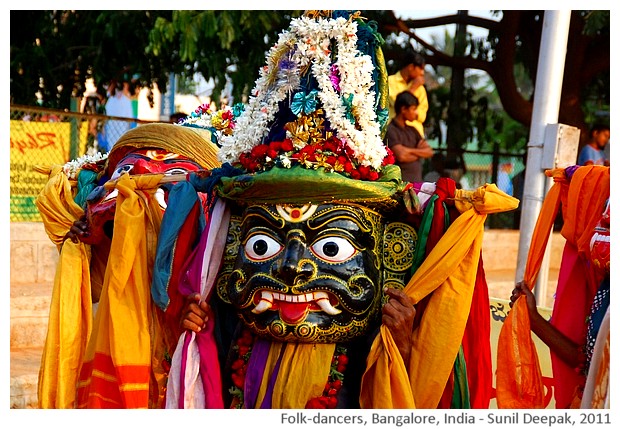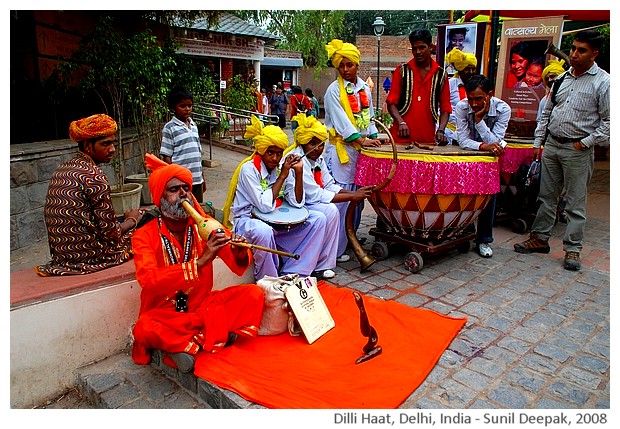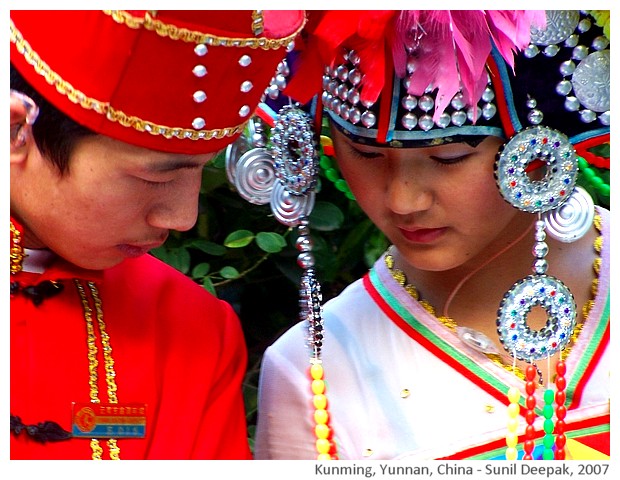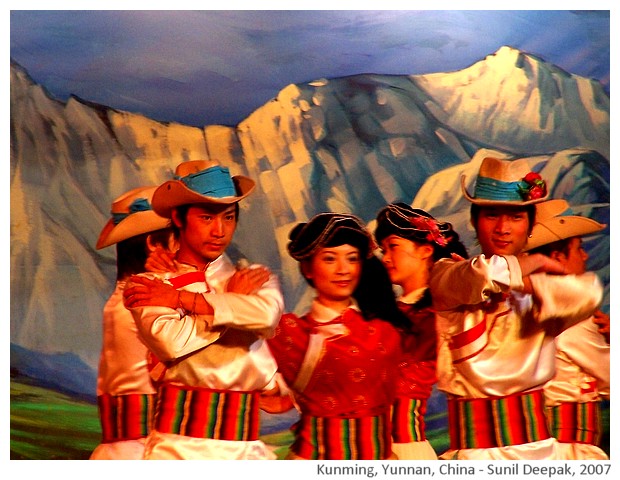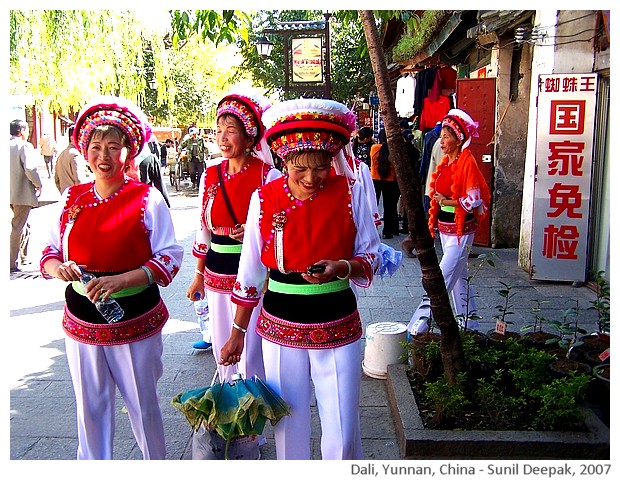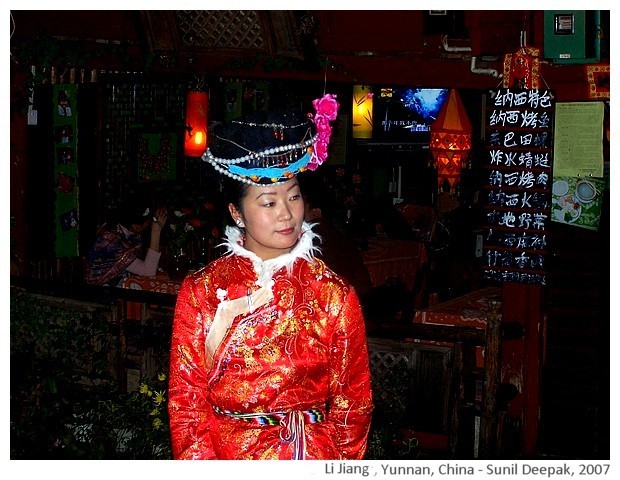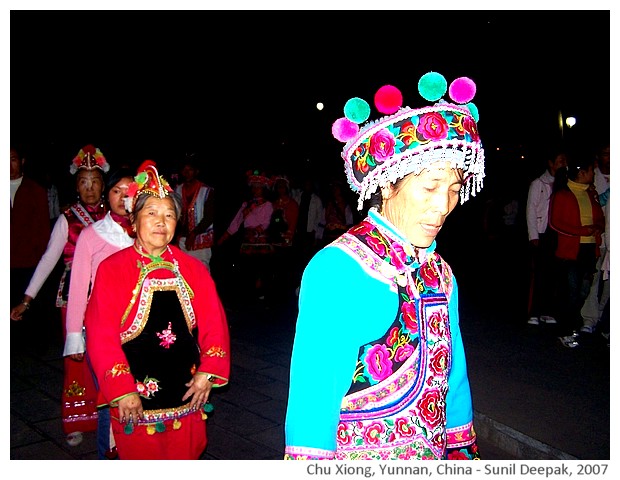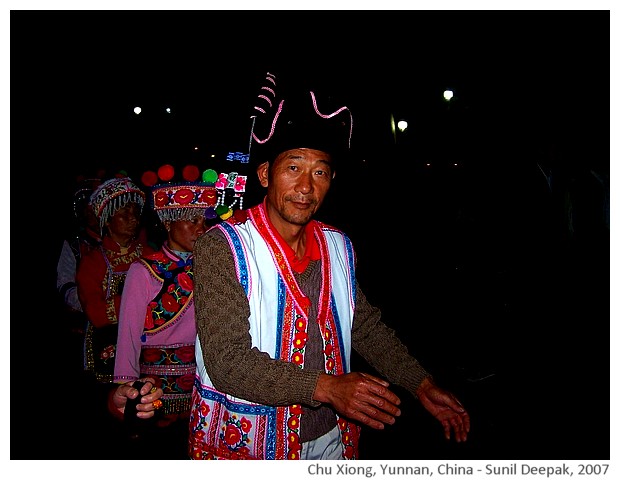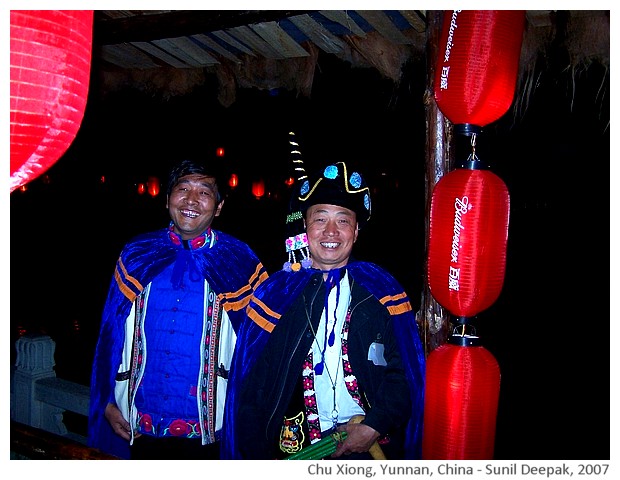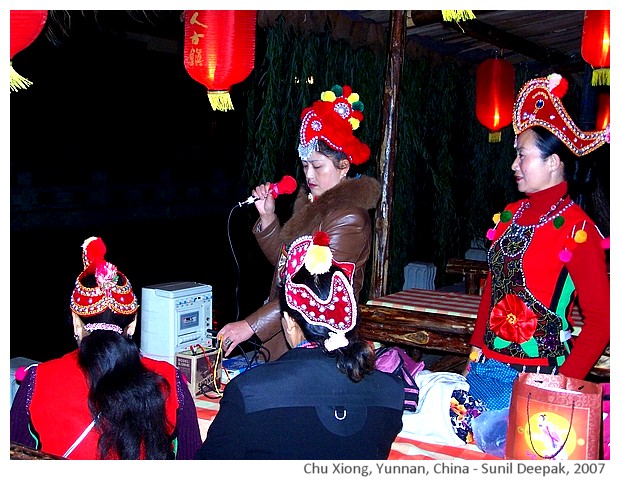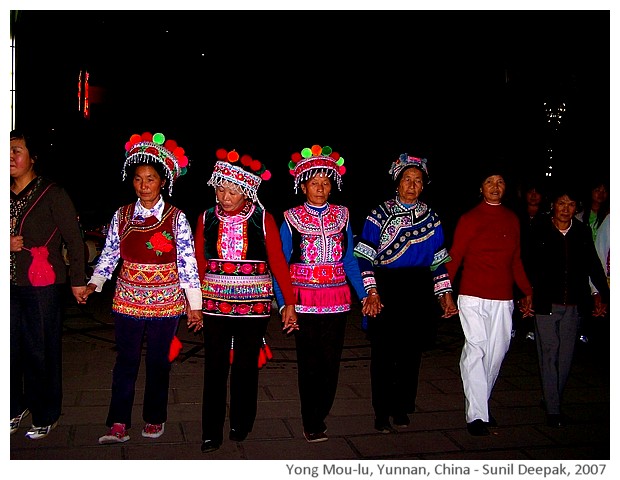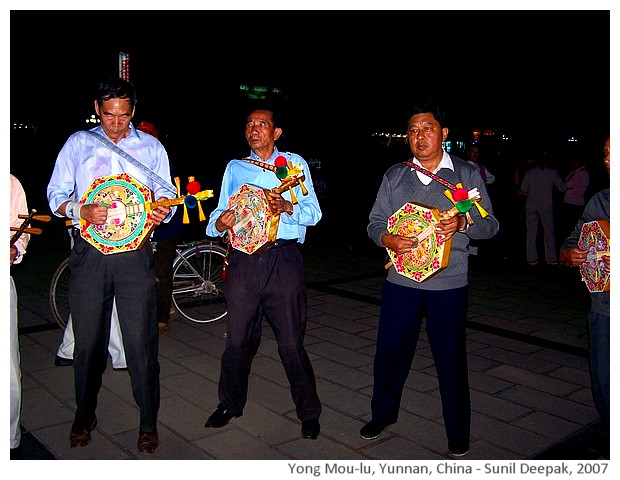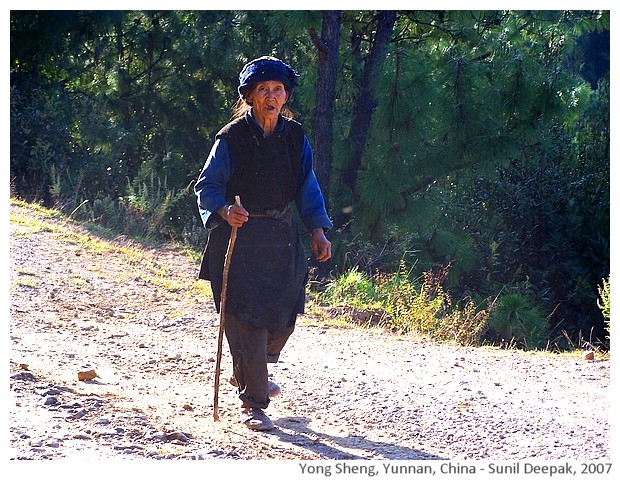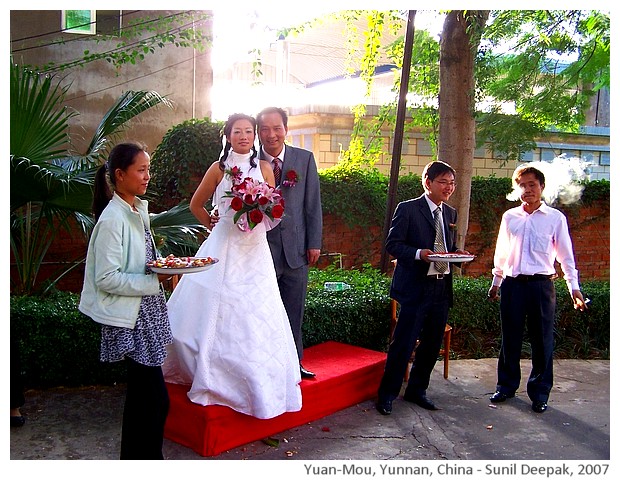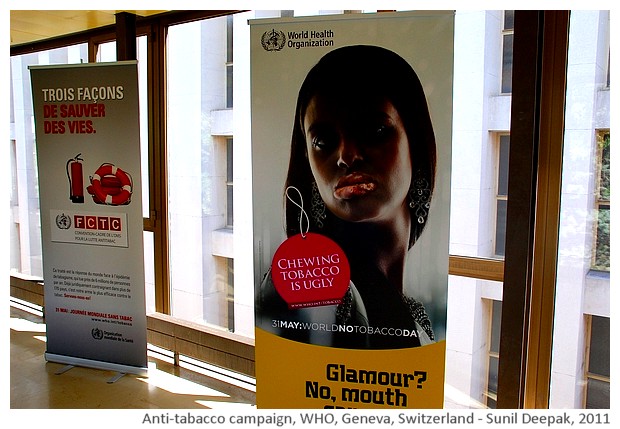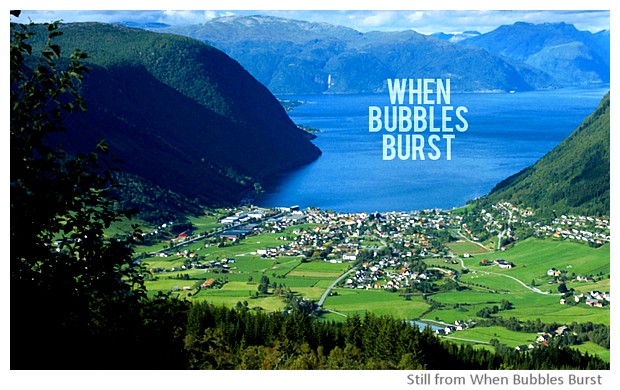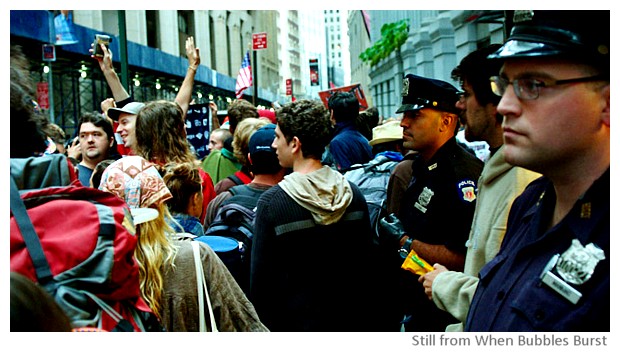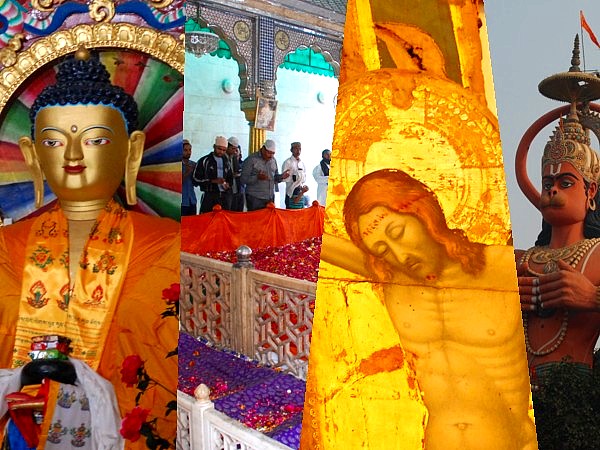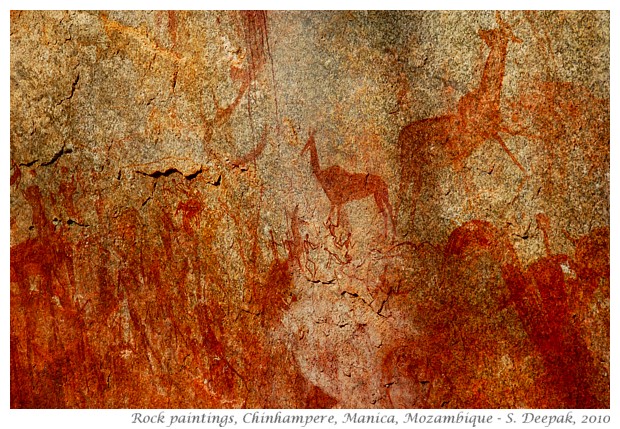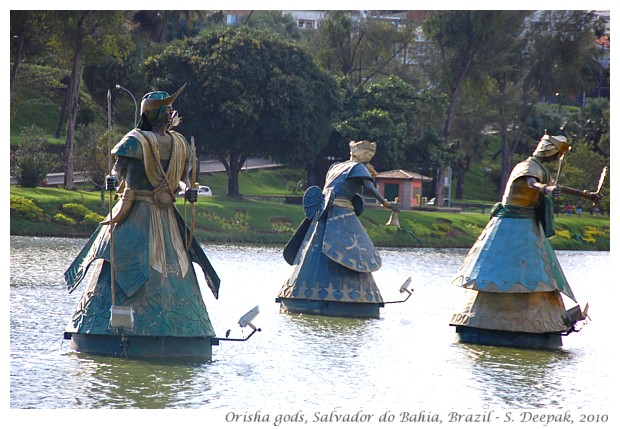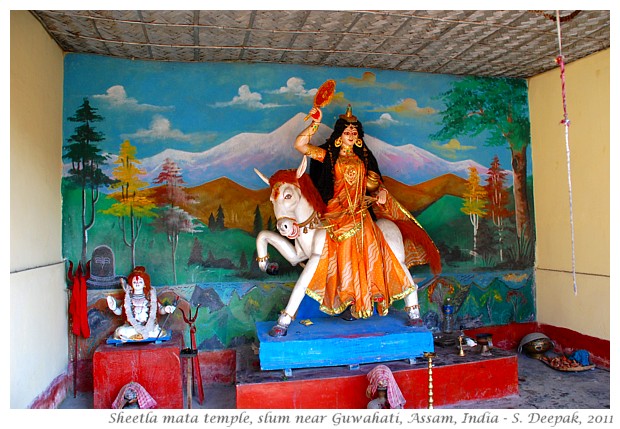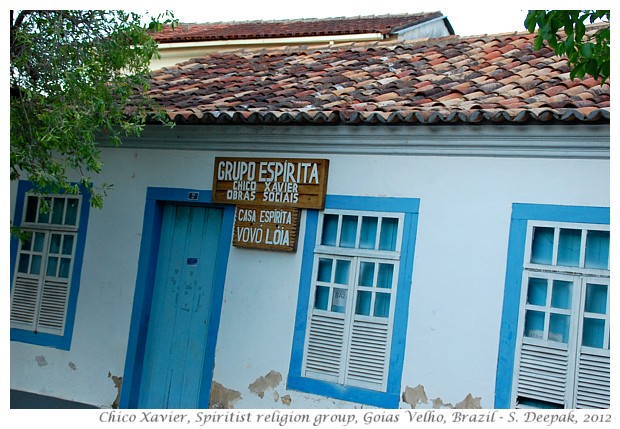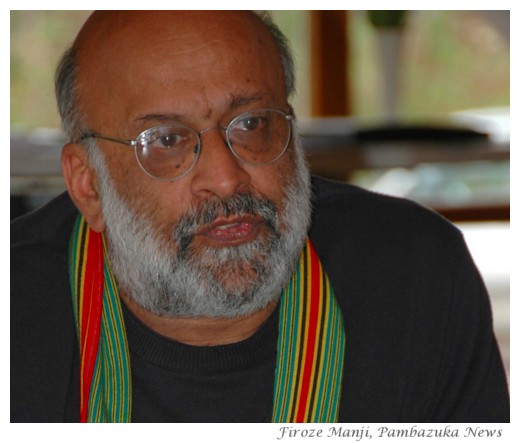For me personally, this book’s theme has a special resonance because it touches on the worlds which I inhabit – that of India, from where I come, and of Venice, where I live; and those of emigrants and refugees, especially those coming here from the Indian subcontinent, with whom I identify and sometimes work as a volunteer. (Click on the images for a bigger view)
Themes of the Book
Its themes are like rivers, sometimes flowing in parallel, sometimes inter-mixing and sometimes changing their course as the story moves, from Sundarbans in India, to Venice and then finally to Sicily. Some of them take centre-stage for some time, only to go underground for long tracts, waiting for another opportunity to emerge. The book has a big canvass but most of the time, it skims on its surface and does not delve deeper.The book is equally divided into 2 parts - the first part is based inIndia, in Kolkata and the second, in Italy and mostly in Venice.
Book summary: Dinanath Dutta or Dino, as his Italian friend Cinta (Giacinta) calls him, is a solitary ageing dealer of rare books from USA and is the narrator of the book. Back to his home-town Kolkata for a holiday, he encounters people from “The hungry Tide”, Ghosh’s book about river dolphins in Sundarbans, which had come out 16 years ago in 2004. Piya, the young Indo-American researcher working on the river-dolphins from that book, is now older but still single and the love-story between DN and Piya is a tiny river in the book, which emerges in the beginning and then disappears, only to re-emerge and conclude happily at the end.
Book summary: Dinanath Dutta or Dino, as his Italian friend Cinta (Giacinta) calls him, is a solitary ageing dealer of rare books from USA and is the narrator of the book. Back to his home-town Kolkata for a holiday, he encounters people from “The hungry Tide”, Ghosh’s book about river dolphins in Sundarbans, which had come out 16 years ago in 2004. Piya, the young Indo-American researcher working on the river-dolphins from that book, is now older but still single and the love-story between DN and Piya is a tiny river in the book, which emerges in the beginning and then disappears, only to re-emerge and conclude happily at the end.
Apart from “The hungry tide”, the book also makes some references to the slave trade ships and the ship-journeys of indentured workers from India, the subject of Ghosh’s recent Ibis trilogy, starting with “The Sea of Poppies”.
The book also makes different references to other authors and their books, especially to the literary world of Italian author Emilio Salgari, known for his books about exotic India of thugs, princesses and pirates, some of which were centred around Sundarbans and were used for creating some TV serials such as Sandokan in the 1970s. Today Salgari is not very popular among children in Italy, but his books were a major influence till about 30-40 years ago, in shaping popular ideas in about India.
The legend of “Banduki Saudagar” linked with a shrine in Sundarbans, is the seed of the book, which guides the whole story. It brings out surprising connections between India and the merchants of the Venetian republic in 17th-18th centuries. The same legend brings DN to Venice, the Banduki (gun) island, where he fortuitously meets the friends he had met in Sundarbans – Tipu, the son of the boatman from “The Hungry Tide” and Rafi, the son of the care-taker of the shrine in the Sundarbans, along with other emigrants from Bangladesh.
The final part of the book, where Ghosh gives a historical overview of peoples’ movements across the world, starting from the millions of persons from villages and towns taken by the colonial masters and transplanted in far-away lands, and links it with today’s emigrants who start similar life-threatening journeys in search for a better life, is my favourite part of this book. Let me quote a few brief passages from this part:
The book also makes different references to other authors and their books, especially to the literary world of Italian author Emilio Salgari, known for his books about exotic India of thugs, princesses and pirates, some of which were centred around Sundarbans and were used for creating some TV serials such as Sandokan in the 1970s. Today Salgari is not very popular among children in Italy, but his books were a major influence till about 30-40 years ago, in shaping popular ideas in about India.
The legend of “Banduki Saudagar” linked with a shrine in Sundarbans, is the seed of the book, which guides the whole story. It brings out surprising connections between India and the merchants of the Venetian republic in 17th-18th centuries. The same legend brings DN to Venice, the Banduki (gun) island, where he fortuitously meets the friends he had met in Sundarbans – Tipu, the son of the boatman from “The Hungry Tide” and Rafi, the son of the care-taker of the shrine in the Sundarbans, along with other emigrants from Bangladesh.
The final part of the book, where Ghosh gives a historical overview of peoples’ movements across the world, starting from the millions of persons from villages and towns taken by the colonial masters and transplanted in far-away lands, and links it with today’s emigrants who start similar life-threatening journeys in search for a better life, is my favourite part of this book. Let me quote a few brief passages from this part:
Yet there was a vital difference – the system of indentured labour, like chattel slavery before it, had always been managed and controlled by European imperial powers. The coolies often had no idea of where they were going or of the conditions that awaited them there; nor did they know much about the laws and regulations that governed their destiny. ...
But all of that was now completely reversed.
Rafi, Tipu and their fellow migrants had launched their own journeys, just as I had, long before them; as with me, their travels had been enabled by their own networks, and they, like me, were completely conversant with the laws and regulations of the countries they were heading to. Instead, it was the countries of the West that now knew very little about the people who were flocking towards them. ...
I saw now why the angry young men on the boats around us were so afraid of that derelict refugee boat: that tiny vessel represented the overturning of a centuries-old project that had been essential to the shaping of Europe. Beginning with the early days of chattel slavery, the European imperial powers had launched upon the greatest and most cruel experiment in planetary remaking that history has ever known: in the service of commerce they had transported people between continents on an almost unimaginable scale, ultimately changing the demographic profile of the entire planet. But even as they were repopulating other continents they had always tried to preserve the whiteness of their own metropolitan territories in Europe.
Few Comments: Ghosh is very eloquent in this part in presenting today's emigration as a kind of retribution of the colonial plundering of the world. However, I am not sure if real-life works like that. Italy was not much of an imperial power, except for a brief spell in Abyssinia (today's Ethiopia-Eritrea). I believe that "Preservation of Whiteness" is not enough to explain the fear of immigrants among the young men in Italy as proposed by Ghosh in his book, it is much more complex and has also to do with religion, culture, language and social norms.
I also think that it is not the young men, as the main demographic group, who are afraid of emigrants. Young people mix much more with persons of other cultures. Instead, it is the older-age groups including the elderly persons, who are more afraid of emigrants and of the changing landscapes of their towns and squares.
The final conclusion of the book seems to be written for a Hollywood film with an Ethiopian woman standing tall in a little boat full of a ragtag bunch of emigrants, lit by a green fluorescence, with dancing dolphins and whales and a sky full of thousands of migrating birds.
Thunderstorms, islands getting submerged in the sea, tropical spiders in Venetian homes and shipworms eating the wooden base on which Venice is standing, strange and extreme weather events including the high tides which drown Venice frequently, dying dolphins and whales, sea-monsters in the Venice lagoon, all make an appearance in the book to underline the dangers of climate change.
"Without the guys from Bangladesh, Venice won’t survive, because they do everything which local Italians don’t do", the book explains. The other side of this story is that emigrants can be asked to work with one third of the minimum salary, without a proper social security cover and to do long shifts, all conditions which locals do not accept and emigrants are too weak to resist.
Often the families of these immigrants think that they are living in Europe and imagine the European lives they see on TV and films, and keep on asking for money and other things from their sons and brothers. A few of them do find the pot of gold at the end of the rainbow, but for almost all of them, the dream of that pot of gold extracts a heavy price, as shown through the words of "Palash" in this book, who hides behind a pseudonym in the book:
There is another dimension of emigration which is mostly left untouched in the book – it is that of a conservative version of Islam among a percentage of emigrants and the backlash that it provokes, especially in small towns and communities in Europe and its perceived links with radical Islam. Ghosh touches on it only briefly through a clumsy air-travel scene, where DN's agitation due to vision of snakes and the accidental switching on of an “Allah” song sung by Nusrat Fateh Ali Khan leads to panic among the passengers, thinking that he is a terrorist.
Books' Characters: Compared to his earlier books, especially the ones from the Ibis trilogy, which had a whole bunch of characters that I had liked, I did not find any such character in this book. For me, both DN and Piya were kind of colourless persons. Tipu and Rafi were a bit more alive, but were difficult to identify with. Even the character of Cinta was, at times, a bit of a caricature.
I know that Ghosh has been campaigning over the past few years for greater awareness and action on the issue of climate change. Even in this book, climate change is a key force shaping the events. Yet, I felt that by bringing in the fables, supernatural forces and miracles, he seems to be saying that we don’t need to worry about the climate change and the earth or the nature will do something to right this situation – I am not sure if he actually wanted to give this message.
Thunderstorms, islands getting submerged in the sea, tropical spiders in Venetian homes and shipworms eating the wooden base on which Venice is standing, strange and extreme weather events including the high tides which drown Venice frequently, dying dolphins and whales, sea-monsters in the Venice lagoon, all make an appearance in the book to underline the dangers of climate change.
Other Aspects of Illegal Emigration
The book touches on some uncomfortable aspects of illegal emigration, including the links with different branches of mafia of different countries which controls this traffic, but mostly it glosses over these aspects. The network which facilitates this traffic and lures unsuspecting young men (and some women, mainly from Africa) full of dreams, who take loans and sell their properties, to embark on a journey that takes years of their lives, often including passages during which they are forced into slave labour or even sexual labour and sometimes ends in drugs, alcoholism or prisons, is seen only in brief glimpses."Without the guys from Bangladesh, Venice won’t survive, because they do everything which local Italians don’t do", the book explains. The other side of this story is that emigrants can be asked to work with one third of the minimum salary, without a proper social security cover and to do long shifts, all conditions which locals do not accept and emigrants are too weak to resist.
Often the families of these immigrants think that they are living in Europe and imagine the European lives they see on TV and films, and keep on asking for money and other things from their sons and brothers. A few of them do find the pot of gold at the end of the rainbow, but for almost all of them, the dream of that pot of gold extracts a heavy price, as shown through the words of "Palash" in this book, who hides behind a pseudonym in the book:
It’s impossible for me to go back now. My family still does not know that I dropped out of university and am now scraping by on the streets. My parents would not be able to imagine that a son of theirs was doing that kind of work. They think I’m still a student going to lectures and writing papers, at my university. If I tell them the truth now I would have to admit that I had been lying all along; that they were right to tell me not to go abroad; that I had made a terrible mistake and would have done better to listen to their advice. I would have to acknowledge that in chasing a dream I destroyed my life.
There is another dimension of emigration which is mostly left untouched in the book – it is that of a conservative version of Islam among a percentage of emigrants and the backlash that it provokes, especially in small towns and communities in Europe and its perceived links with radical Islam. Ghosh touches on it only briefly through a clumsy air-travel scene, where DN's agitation due to vision of snakes and the accidental switching on of an “Allah” song sung by Nusrat Fateh Ali Khan leads to panic among the passengers, thinking that he is a terrorist.
Conclusions
Quality of Story Telling in Gun Island: I think that this book Gun Island is substantially different from Ghosh’s earlier works. He has a way with his words, and this book also gives him plenty of opportunities to show-off those word-building skills, to weave unexpected inter-connections. However, that pleasure of reading is hampered by feelings of disbelief because of too many coincidences, convenient dreams and visions and some cheesy miracles which dot the whole book. While reading it, I wondered if he has become lazier as a writer or does he let himself be guided too much by his concerns and activism for the climate?Books' Characters: Compared to his earlier books, especially the ones from the Ibis trilogy, which had a whole bunch of characters that I had liked, I did not find any such character in this book. For me, both DN and Piya were kind of colourless persons. Tipu and Rafi were a bit more alive, but were difficult to identify with. Even the character of Cinta was, at times, a bit of a caricature.
I know that Ghosh has been campaigning over the past few years for greater awareness and action on the issue of climate change. Even in this book, climate change is a key force shaping the events. Yet, I felt that by bringing in the fables, supernatural forces and miracles, he seems to be saying that we don’t need to worry about the climate change and the earth or the nature will do something to right this situation – I am not sure if he actually wanted to give this message.
To conclude, for me Ghosh is one of the best story-tellers of our times. With that kind of placement on a high pedestal, for me reading this book was not as fulfilling as his previous works.
***





